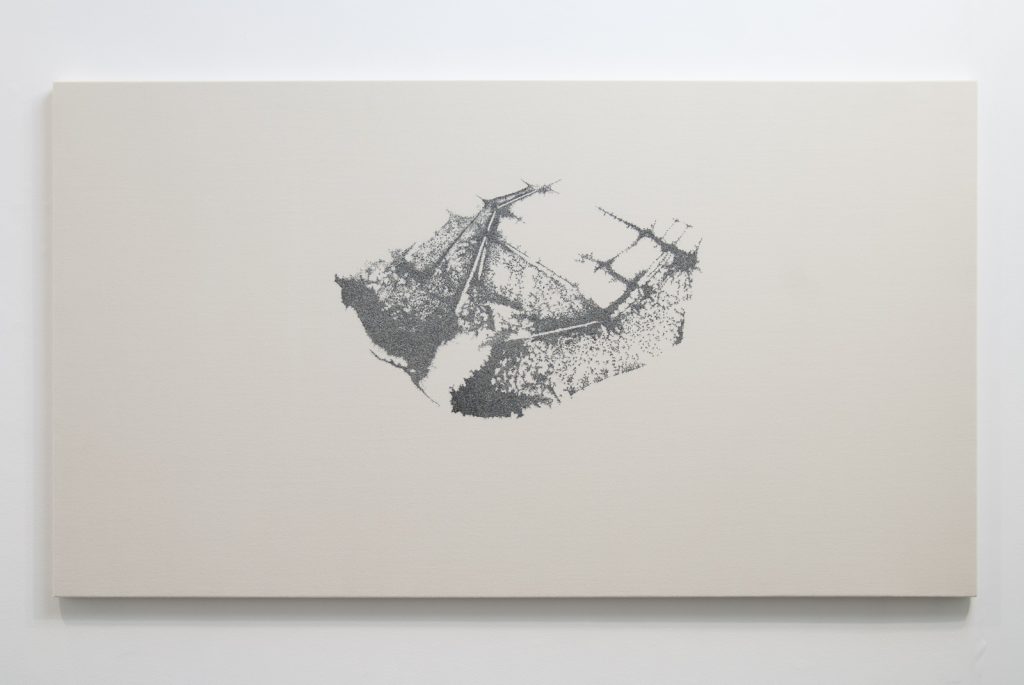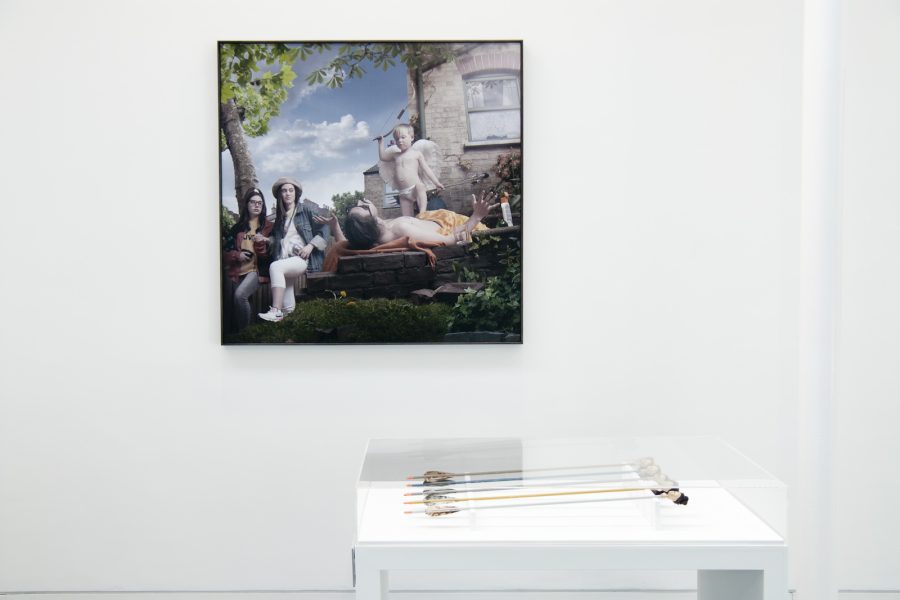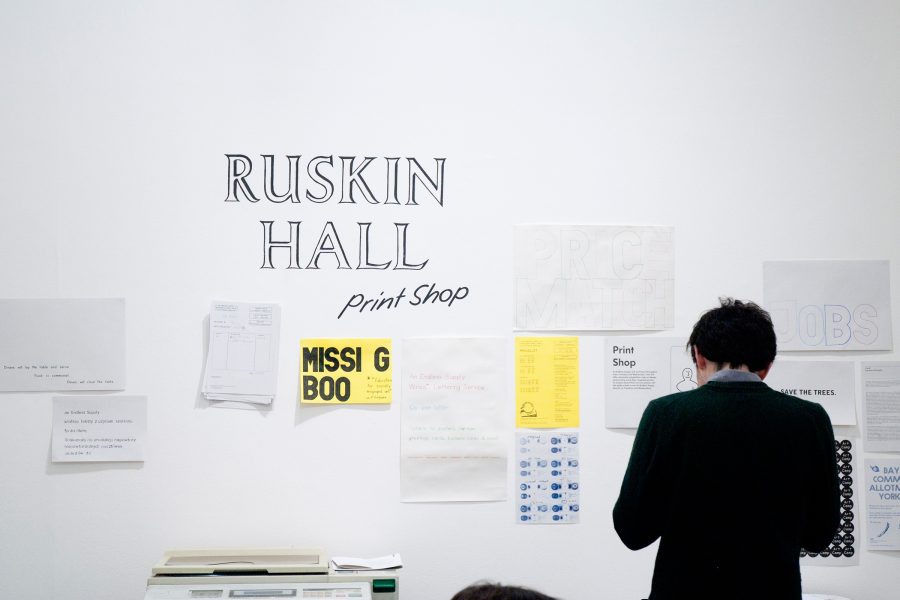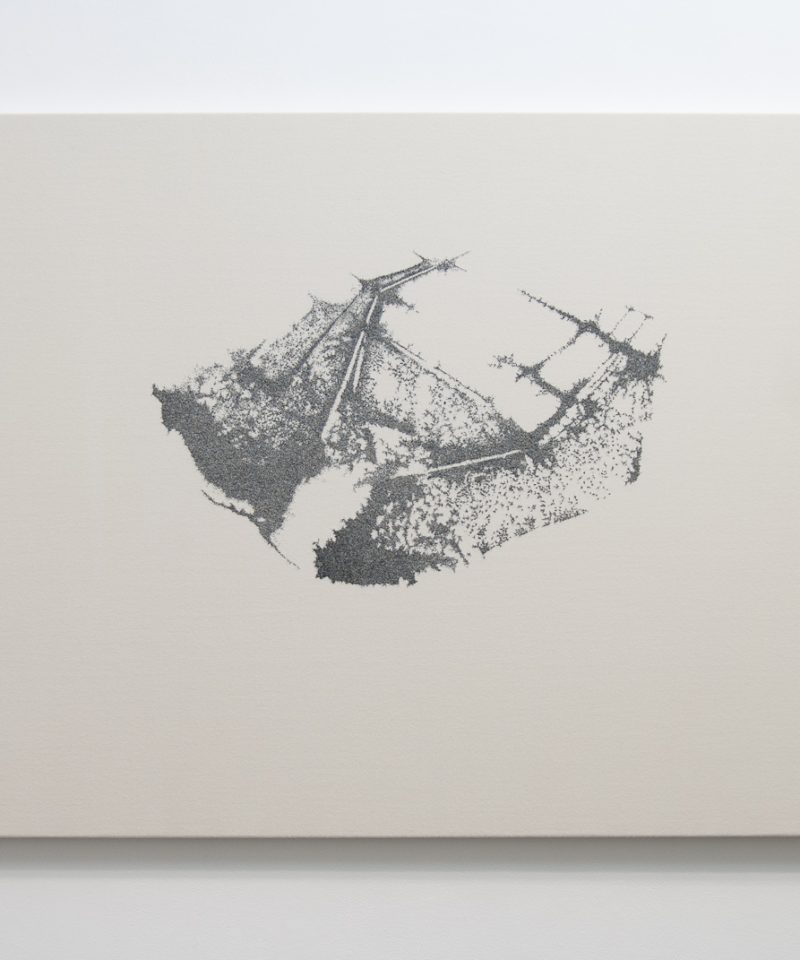In this first interview in a series of conversations with each Jerwood Makers Open exhibitor, Roanna Wells, an artist interested in the aesthetic possibilities of crowd formations, delves into the concepts and contexts underpinning her practice.
Were you attracted to crowd patterns for their formal possibilities, aesthetically speaking, or was there something about the nature of group gatherings and the contexts they occur in (demonstrations, concerts, festivals etc.) that made the subject interesting for you?
My fascination with crowd formations started out as an aesthetic interest. It arose when I was testing out abstract mark-making methods with simple traditional stitches. Various comments given to me by visitors to my studio linked the work to swarms of bees, flocks of starlings, groups of flowers etc, but the one comment which stuck was that it reminded them of a crowd of people. This got me researching and I soon discovered there was a wealth of imagery available that would be really interesting to see interpreted into stitched drawings.
After this initial spark of inspiration, it became apparent that not only was the aesthetic shape important, but that it could be created with a hint at something more socially connected and contextually relevant. After this recent work for Jerwood Makers, where the project was given a much greater depth through me being able to visit the location of the source image and be involved in the capturing of the photography, it has definitely shown that the relevance of the image is equally as important as the nature of the outcome.
Your technique of hand stitching seems like an incredibly labour intensive and time consuming process. Why does this particular method of mark making appeal to you as oppose to say drawing or painting?
I suppose I inherited my love of stitch through my mother who is a textile artist, I grew up surrounded with threads, fabrics, paints etc, however I took my own direction whilst studying Embroidery at Manchester School of Art. I was introduced to the idea of looking at the relationship between drawing and stitch through experimental mark making processes, first with various drawing materials and then in both hand and machine stitch. This really struck a chord with me, and it was this element that I took away with me to continue developing as I started out with my professional practice.
Some of my projects are abstract and purely process led, as I discovered that the physical process of creating marks, especially the motions required for stitch, are something that I find great joy and contentment in. I am a patient person, so the time consuming nature of hand stitch is something I find comes easily to me.
The way that a stitch becomes totally integrated with the surface, probably never to be undone, leaves a subtle message about the time taken to create it, the commitment in the marks made, the decision making process and personal connection with the cloth and the maker.
Could you talk a bit about your experience attending the Kumbh Mela? Am i right in thinking this was the first mass gathering you have depicted after actually attending?
Visiting the Kumbh Mela was such an eye opening, and at times moving, experience for me. I had heard lots about the festival before and even remember watching a documentary 12 years ago when the last big celebration took place. When I was awarded the Jerwood commission, I realised that this could be the perfect opportunity to not only commission specific photography, but actually visit the location too.
I wanted to be able to have an even greater depth of meaning to my work, and gain an insight into the nature of this particular crowd. It is the largest gathering of humans on the planet and I was intrigued to see first hand that amount of people in one place and experience the faith and devotion that drives so many to the river Ganges. It was a creative mission first and foremost, but it was also an opportunity to strengthen my interest in different religions and philosophies. I’m not particularly religious, but I am very open minded and philosophical in my approach to spiritual ideas and I was interested to know more about the Hindu faith and how their devotion to it leads to this awesome commitment.
I came away feeling very privileged and honoured to have been part of such an event, and it made me aware that for the majority of the pilgrims attending, it was not merely a decision to enjoy the spectacle, but an instinctive, almost magnetic necessity to be present at this sacred occasion. The belief that their souls will be cleansed is so strong that pilgrims will overcome great distance, pain, poverty and hardship to get to the city, some travelling barefoot for weeks carrying all that they own. It was very humbling, and certainly gave the finished piece much more gravitas and depth.
In seems to me that we are living in an epoch characterised by collectivity. From the rather pathetic attempt to outsource governance in the ConDem party’s ‘big society’ rhetoric, to the ubiquity of social networks and comment based inclusivity saturating the mainstream mediascape. Are you interested in these developments at all?
I suppose different cultures have many different ways of trying to work collectively. Some are successful, others not so, and some are even harmful or destructive. It is difficult to say which methods are best. After experiencing extreme poverty (by our western standards!) at the Kumbh Mela, it struck me that often developing countries, although appearing to have very little in terms of material possessions, in fact have the greatest wealth of spirit, compassion, community values and devotion to each other and to a higher faith. Although we would consider many of the pilgrims at the Kumbh to be living in poverty, the manner in which a community is formed to cater and provide for this amount of people is staggering, and I do believe that the Western, supposedly developed world, could learn a lot from this.
Because the majority of us have everything we need on a basic level, we turn to other ways to connect with others and this is mainly through the freedom of speech we see in social networks etc. While I believe this is extremely important in today’s society, I do also wish that there could be a greater understanding of the need for physical and wholesome connection with the people around us.
Of course we embrace technological developments, I’m all for Twitter and Instagram! However I believe that the balance of this with community spirited gatherings would be the best way for us to connect with those around us.
The traditional depiction of crowds, by people like Gustave Le Bon and Sigmund Feud, has been of a wild and unthinking mass, a collectivity in which rational individual choices are surrendered to the irrational, simplistic, and primal will of the group. Recently net enthusiasts like Clay Shirkey have espoused the virtues of groups and a belief in the noosphere. Where do you stand in relation to crowds? Are these idea of interest to you?
The formal discussion into the nature of crowd formations and their relevance to cultural or social ideas is something I have only lightly investigated so far. My exploration into the use of crowd imagery is fairly recent in my practice and as yet, I have been mainly interested in the image as an aesthetic shape and the immediate relevance of the subject matter.
However, now that I have realised the potential for this as a theme and the wealth of imagery available, along with the success of my technique for depicting the representations, I am going to focus much more on this and would like to read up on the academic side of research towards crowd formations. This may hopefully add yet another level of meaning to my work.
What do you have planned for the future in terms of projects?
The Jerwood Makers commission has really opened my eyes to the possibilities available for me in terms of travel, first hand experience and cultural relevance, along with scale of work and ambition of my projects. I want to work on making the crowd formations series a major focus of my practice, as I now realise the scope for source inspiration and the diversity of subject matter available.
I don’t have any other major projects planned as yet, I’m having a little breather after what was my most ambitious work to date! but I hope that this is the start of something quite interesting! I feel at an exciting stage of my career.



